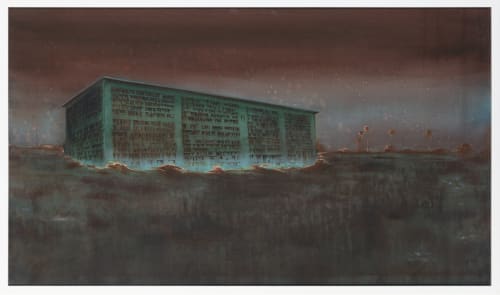Sujith S.N.’s solo show, Seer–Seen, is a series of landscapes engulfed by the temporality of loitering and purpose, of documentation and discourse, of perspectives and views.
The following excerpt on Sujith’s new body of work is from the essay, ‘The Oddness of Identification: Sujith S. N.’s Landscapes like Painting’ (2020) by Prajna Desai:
Landscape like painting is deathless within subcontinental art, and a central asset of painter Sujith S. N.’s series Seer-Seen is its unabashed conformity to these useful models, indistinguishable from each other in so far as scores of Indian artists since the early twentieth century have not only been painters. In marrow and bone, they have been, as far as landscape in its broad definition connotes terrain and its occupants, landscape painters alone. The oddness of the current presentation, which includes seven or eight large horizontally composed images of expanses of water, great walls, and substantial wastes, and an equal number of preparatory sketches, is one of identification. It is impossible to locate where boredom begins and contemplation ends, where the creative contagion of falling into a brown study as someone makes a work becomes a space of intensity that could reshape viewing. How much, before finally turning away, do you end up seeing of the sea?
The punning title, ‘Seer-Seen’, comes with a nod to the scientific vernacular of optical complexity. Other than this, Sujith’s visual approach throughout this emotively ambiguous set of works spurns all but a two-sided conclusion. The representational impulse cannot be judged by the object that incited it. Nor will its compressions and reordering match the elasticity of the object that penetrated the imagination in the first place.
